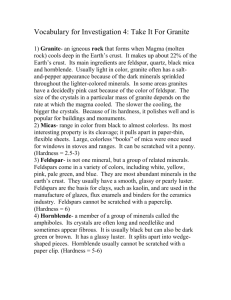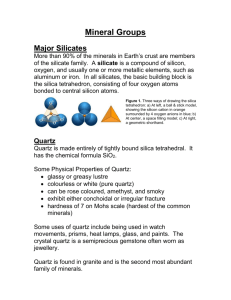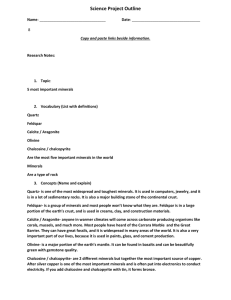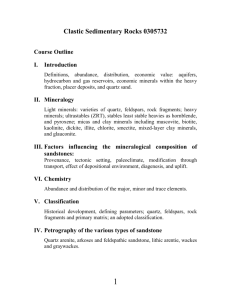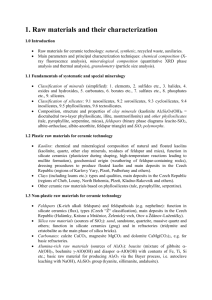Earth Revealed Episode 12: Minerals
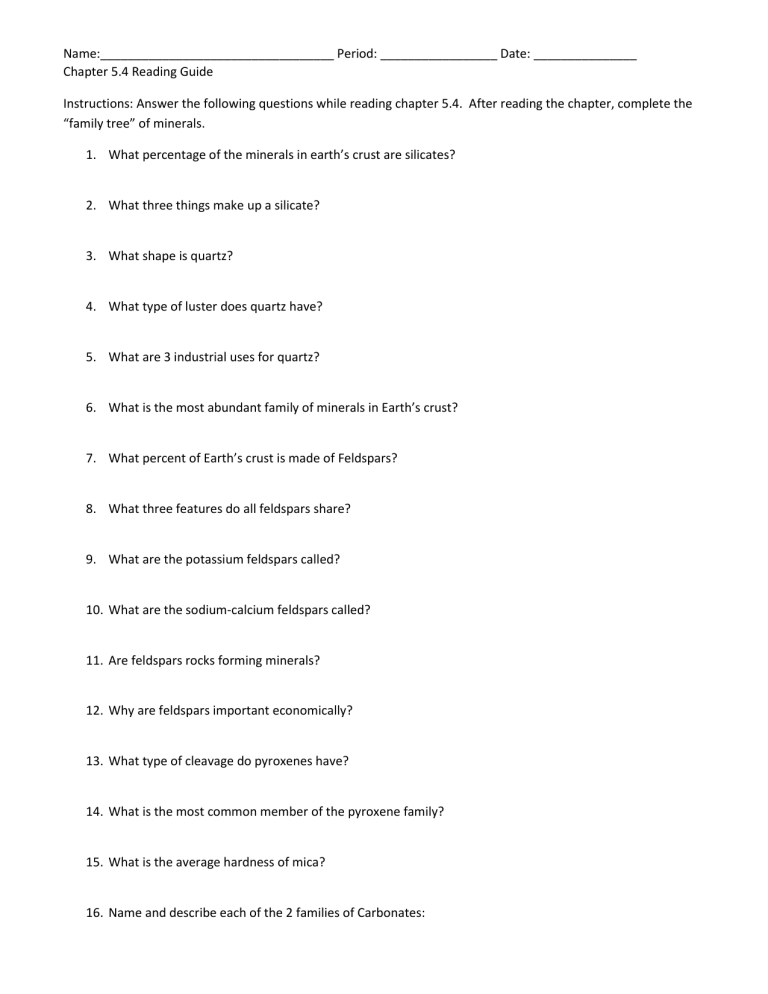
Name:__________________________________ Period: _________________ Date: _______________
Chapter 5.4 Reading Guide
Instructions: Answer the following questions while reading chapter 5.4. After reading the chapter, complete the
“family tree” of minerals.
1.
What percentage of the minerals in earth’s crust are silicates?
2.
What three things make up a silicate?
3.
What shape is quartz?
4.
What type of luster does quartz have?
5.
What are 3 industrial uses for quartz?
6.
What is the most abundant family of minerals in Earth’s crust?
7.
What percent of Earth’s crust is made of Feldspars?
8.
What three features do all feldspars share?
9.
What are the potassium feldspars called?
10.
What are the sodium-calcium feldspars called?
11.
Are feldspars rocks forming minerals?
12.
Why are feldspars important economically?
13.
What type of cleavage do pyroxenes have?
14.
What is the most common member of the pyroxene family?
15.
What is the average hardness of mica?
16.
Name and describe each of the 2 families of Carbonates:
Name:__________________________________ Period: _________________ Date: _______________ a.
b.
17.
Describe each of the following including special/unique features a.
Hematite b.
Magnetite c.
Pyrite
18.
Answer questions 1-4 on page 111.
1.
2.
3.
4.
Name:__________________________________ Period: _________________ Date: _______________
Video Study Guide: Earth Revealed Episode 12: Minerals
Instructions: Answer the questions below while viewing the video.
1.
What five characteristics are required for a substance to be considered a mineral?
1.
2.
3.
4.
5.
2.
What are rocks?
3.
How are minerals like fossils?
4.
What are some of the common rock forming minerals?
5.
How can the growth of a mineral be compared to the construction of a block wall?
6.
Why is quartz harder than steel?
7.
What is cleavage?
8.
How does the cleavage of feldspar differ from the cleavage of mica?
Name:__________________________________ Period: _________________ Date: _______________
9.
What is one easy way to distinguish calcite from quartz?
10.
What happens when you drop acid on a carbonate mineral (or rock)?
11.
What is luster (this is very important)?
12.
What is streak?
13.
How deep in the crust were the granitics of the Whipple Mountains formed?
14.
Discuss diamonds and graphite. What makes them so different?
15.
Discuss hydrothermal solutions and the precipitation of metallic minerals.
16.
What is the origin on most hydrothermal solutions?
17.
Discuss the formation of ore minerals.
18.
Discuss the importance of the silicate minerals (also very important)

